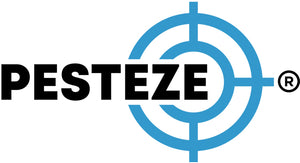GUIDE TO SQUIRRELS IN ATTICS AND CRAWLSPACES

GUIDE TO SQUIRRELS IN ATTICS AND CRAWLSPACES
SUMMARY
Squirrels may look harmless, but when they invade attics or crawlspaces, they can cause extensive structural and electrical damage. Learn how to identify their presence, safely remove them, and prevent future infestations. This guide covers effective methods for squirrel control, exclusion, and home protection.
FEATURES
• Entry Point Detection: Identify how squirrels access attics and crawlspaces through small roof gaps or vents.
• Damage Awareness: Understand the risks squirrels pose, from chewed wiring to torn insulation.
• Humane Removal Methods: Learn safe trapping and relocation practices that comply with wildlife laws.
• Sealing and Repair: Discover how to properly close entry points to prevent re-entry.
• Noise and Odor Control: Address scratching, droppings, and unpleasant smells left behind by infestations.
• Long-Term Prevention: Implement landscaping and maintenance strategies to keep squirrels away permanently.
GUIDE DESCRIPTION
Squirrels are agile and persistent creatures that can easily enter homes through roof vents, chimneys, or small openings in siding and eaves. Once inside, they often build nests in attics or crawlspaces, using insulation as bedding and creating a mess that can quickly escalate into a serious problem. Squirrel infestations not only lead to noise disturbances but can also pose safety hazards and expensive property damage.
The first step in managing a squirrel problem is to identify the signs of their presence. Common indicators include scratching sounds, droppings, gnawed wood, or shredded insulation. Squirrels are active during the day, so noises are usually heard in the morning or early evening. Once you’ve confirmed their activity, avoid blocking exits immediately—trapping a squirrel inside can lead to further destruction.
Humane removal should be the next priority. Live traps baited with nuts or seeds can be placed near entry points. Once captured, squirrels should be released several miles away from your property to prevent their return. Alternatively, homeowners can contact professional wildlife removal services to handle the process safely and legally.
After removal, it’s crucial to repair and seal all potential access points. Use heavy-gauge wire mesh or metal flashing to cover vents, gaps, and roof openings. Inspect chimneys, attic vents, and roof edges for vulnerabilities, as squirrels are skilled climbers capable of squeezing through small spaces.
Cleaning and deodorizing the affected areas will help remove any lingering odors or pheromones that might attract other wildlife. Replace contaminated insulation, sanitize with enzyme-based cleaners, and ensure proper ventilation to restore air quality.
Finally, preventive maintenance can help avoid future infestations. Trim tree branches at least six to eight feet away from your roofline to reduce access routes. Store food and birdseed securely, and keep gutters clear of nesting materials. Routine roof inspections and quick repairs will further minimize squirrel entry opportunities.
By combining humane removal, thorough repair, and ongoing prevention, homeowners can protect their property from the costly and frustrating effects of squirrels in attics and crawlspaces.
- Aahna Barma


Comments 0